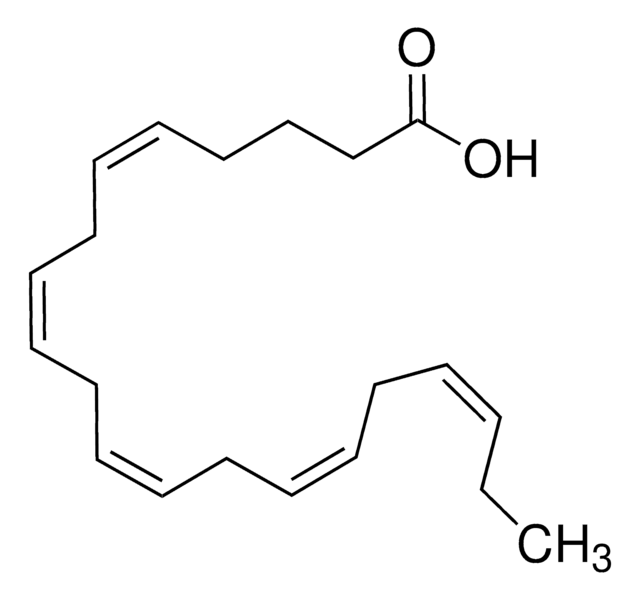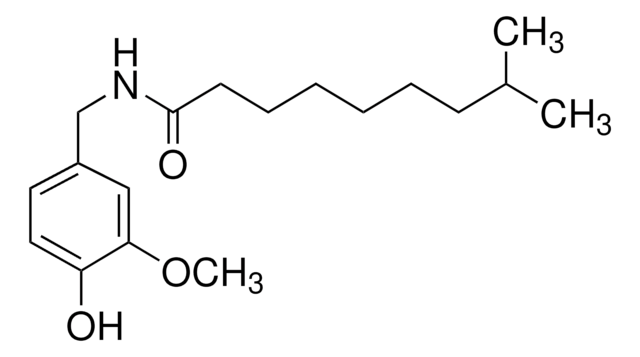E6627
cis-5,8,11,14,17-Eicosapentaenoic acid sodium salt
≥99% (capillary GC)
About This Item
Produits recommandés
Source biologique
synthetic (organic)
Niveau de qualité
Pureté
≥99% (capillary GC)
Forme
film or powder
Couleur
white to off-white
Solubilité
methanol: 50 mg/mL, clear to slightly hazy, colorless to faintly yellow
Conditions d'expédition
dry ice
Température de stockage
−20°C
Chaîne SMILES
[Na].CC\C=C/C\C=C/C\C=C/C\C=C/C\C=C/CCCC(O)=O
InChI
1S/C20H30O2.Na.H/c1-2-3-4-5-6-7-8-9-10-11-12-13-14-15-16-17-18-19-20(21)22;;/h3-4,6-7,9-10,12-13,15-16H,2,5,8,11,14,17-19H2,1H3,(H,21,22);;/b4-3-,7-6-,10-9-,13-12-,16-15-;;
Clé InChI
TVEGTERCKGGVCJ-LIJGWLRISA-N
Informations sur le gène
human ... ALOX5(240)
mouse ... ALOX5(11689)
rat ... ALOX5(25290)
Vous recherchez des produits similaires ? Visite Guide de comparaison des produits
Description générale
Application
- to study its effect on the pathology of lupus in drug-induced and spontaneous mouse models
- to pretreat mouse alveolar macrophages to study the effect/relationship between amiodarone and eicosapentaenoic acid (EPA) concerning the cytokine release
- to examine if pharmacological correction with EPA supplementation might restore autophagic flux and reduce renal lipotoxicity in mice
Actions biochimiques/physiologiques
Code de la classe de stockage
11 - Combustible Solids
Classe de danger pour l'eau (WGK)
WGK 3
Point d'éclair (°F)
Not applicable
Point d'éclair (°C)
Not applicable
Équipement de protection individuelle
Eyeshields, Gloves, type N95 (US)
Certificats d'analyse (COA)
Recherchez un Certificats d'analyse (COA) en saisissant le numéro de lot du produit. Les numéros de lot figurent sur l'étiquette du produit après les mots "Lot" ou "Batch".
Déjà en possession de ce produit ?
Retrouvez la documentation relative aux produits que vous avez récemment achetés dans la Bibliothèque de documents.
Les clients ont également consulté
Articles
The potential for the prevention and treatment of cardiovascular disease through increased dietary intake of omega-3 (w-3) fish oils is not a recent scientific discovery.
Notre équipe de scientifiques dispose d'une expérience dans tous les secteurs de la recherche, notamment en sciences de la vie, science des matériaux, synthèse chimique, chromatographie, analyse et dans de nombreux autres domaines..
Contacter notre Service technique









